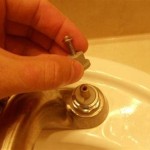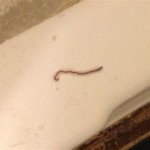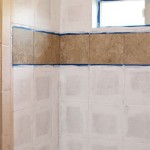Replacing A Bathroom Sink Drain Collar
The bathroom sink drain collar, also known as the stopper flange or strainer body, is a crucial component of the sink's drainage system. It forms the visible part of the drain inside the sink basin and is responsible for catching debris, creating a watertight seal, and connecting to the drainpipe below the sink. Over time, the drain collar can corrode, become damaged, or develop leaks. Replacing a damaged or worn-out drain collar is a standard plumbing repair that most homeowners can accomplish with the proper tools and understanding.
This article provides a comprehensive guide to replacing a bathroom sink drain collar. It will cover the necessary tools and materials, step-by-step instructions for removing the old collar and installing the new one, and essential tips for ensuring a leak-free installation. Before commencing any plumbing repair, it is imperative to prioritize safety by turning off the water supply to the sink.
Key Points of Replacing a Bathroom Sink Drain Collar
Several crucial aspects should be considered when tackling this project. First, understanding the anatomy of the drain assembly is paramount. Second, the correct removal of the old drain collar is critical for a successful replacement. Third, proper sealing is essential to prevent future leaks and water damage.
These key points, when addressed meticulously, will contribute to a smooth and effective replacement process, ensuring a functional and leak-free bathroom sink drain.
Tools & Materials Required:
- New bathroom sink drain collar (compatible with your sink)
- Adjustable wrench
- Channel-lock pliers
- Basin wrench (optional, but often helpful)
- Putty knife or scraper
- Plumber's putty
- Towel or bucket
- Gloves
- Safety glasses
- Clean rags
Step-by-Step Instructions:
1. Preparation is Key: Begin by shutting off the water supply to the sink. Locate the shut-off valves under the sink—typically one for hot water and one for cold water. Turn both valves clockwise until they are fully closed. To ensure the water is off, turn on the faucet briefly to release any remaining pressure in the lines. Place a towel or bucket under the sink to catch any residual water that may spill during the process. Wearing safety glasses is recommended to protect the eyes from debris.
2. Disconnect the P-Trap: The P-trap is the curved section of pipe located directly below the sink drain. It is designed to trap debris and prevent sewer gases from entering the bathroom. To remove the P-trap, loosen the slip nuts connecting it to the tailpiece (the vertical pipe extending from the drain collar) and the drainpipe in the wall. Use channel-lock pliers or an adjustable wrench to loosen the nuts, being careful not to overtighten them, which can damage the plastic piping. Once loosened, carefully detach the P-trap and empty its contents into the bucket. Inspect the P-trap and tailpiece for any signs of damage or corrosion. If necessary, consider replacing these components as well.
3. Disconnect the Tailpiece (if necessary): In some cases, the tailpiece can be removed separately from the drain collar. If so, loosen the slip nut connecting the tailpiece to the drain collar from underneath the sink. If the tailpiece is corroded or stuck, penetrating oil can be applied to help loosen the nut. Once the nut is loose, carefully detach the tailpiece. If the tailpiece is permanently attached to the drain collar, this step can be skipped.
4. Loosen the Drain Collar Nut: The drain collar is secured to the sink basin from underneath by a large nut and potentially other washers or locking rings. This nut needs to be loosened to remove the old drain collar. Use a basin wrench or adjustable wrench to grip the nut. A basin wrench is specifically designed for this task and can be particularly helpful in tight spaces. Turn the nut counterclockwise to loosen it. In older installations, the nut may be heavily corroded and difficult to remove. Penetrating oil can be applied to help loosen the nut. Be patient and apply steady pressure. If the nut is severely stuck, applying heat with a heat gun (used carefully) might help to break the corrosion.
5. Remove the Old Drain Collar: Once the nut is completely loose, carefully push the drain collar up from underneath the sink. This will detach the collar from the sink basin. If the collar is stuck due to old plumber's putty, gently use a putty knife or scraper to break the seal around the edge of the drain collar on the top side of the sink. Once the seal is broken, the drain collar should easily lift out of the sink basin. Clean the sink basin area thoroughly with a putty knife or scraper to remove any remaining putty or debris. Ensure the surface is clean and smooth for the new drain collar.
6. Prepare the New Drain Collar: Before installing the new drain collar, inspect it for any defects. Roll a rope of plumber's putty and apply it evenly around the underside of the drain collar flange—the part that will sit flush against the sink basin. Ensure the putty forms a complete and continuous seal. The amount of putty needed will vary depending on the size and shape of the drain collar. Avoid using excessive putty, as it will simply squeeze out during installation and create a mess. Some drain collars come with a rubber gasket instead of requiring plumber's putty. If your new collar has a gasket, follow the manufacturer's instructions for installation.
7. Install the New Drain Collar: Carefully insert the new drain collar into the drain opening in the sink basin. Press down firmly to ensure the putty or gasket creates a tight seal against the sink. From underneath the sink, install the rubber or fiber washer, followed by the metal reinforcing washer, and then the drain collar nut. Tighten the nut by hand initially to ensure proper alignment. Use a basin wrench or adjustable wrench to tighten the nut further, but avoid overtightening, which can crack the sink basin or damage the drain collar. The goal is to achieve a snug fit that creates a watertight seal.
8. Clean Up Excess Putty: Remove any excess plumber's putty that has squeezed out from around the edge of the drain collar on the top side of the sink. Use a putty knife or scraper to carefully remove the excess putty, leaving a clean and professional-looking seal.
9. Reconnect the Tailpiece and P-Trap: Reattach the tailpiece to the new drain collar from underneath the sink. Tighten the slip nut securely, but avoid overtightening. Then, reconnect the P-trap to the tailpiece and the drainpipe in the wall. Tighten both slip nuts securely. Ensure all connections are properly aligned and that the P-trap is positioned correctly.
10. Test for Leaks: Slowly turn on the water supply to the sink, starting with a trickle and gradually increasing the flow. Carefully inspect all connections—around the drain collar, tailpiece, and P-trap—for any signs of leaks. If any leaks are detected, immediately turn off the water supply and tighten the corresponding connection. If tightening the connection does not stop the leak, disassemble the connection, inspect the components for damage, and reassemble, ensuring proper alignment and using fresh plumber's putty or replacing the rubber washers if necessary. Repeat the leak test until all connections are watertight.
11. Final Inspection and Cleanup: Once all leaks are resolved, perform a final inspection of the entire drain assembly. Ensure all connections are secure and that the P-trap is properly aligned. Clean up any spills or debris. Dispose of the old drain collar and any used plumber's putty properly.
Troubleshooting Common Issues
Stripped Threads: If the threads on the tailpiece or drain collar are stripped, it may be impossible to achieve a watertight seal. In this case, the affected component will need to be replaced. Consider using Teflon tape on the threads for added sealing.
Corroded Nuts: Corroded nuts can be extremely difficult to loosen. Penetrating oil can be applied to help break the corrosion. If the nut is severely stuck, a nut splitter tool may be necessary to remove it without damaging the surrounding components. As a last resort, carefully applying heat with a heat gun may also help.
Misaligned Pipes: If the pipes are misaligned, it may be difficult to connect the P-trap properly. Flexible couplings can be used to compensate for slight misalignments. For more significant misalignments, it may be necessary to reconfigure the drain plumbing.
Preventative Maintenance
To prolong the life of the bathroom sink drain components, regular maintenance is recommended. Avoid pouring harsh chemicals or abrasive cleaners down the drain, as these can corrode the metal and plastic parts. Periodically clean the drain stopper and strainer to remove debris that can accumulate and restrict water flow. Check for leaks regularly and address them promptly to prevent water damage. Consider using a drain cleaner occasionally to prevent clogs and maintain proper drainage.
By following these steps carefully, homeowners can successfully replace a bathroom sink drain collar and ensure a functional and leak-free drainage system. Consistent monitoring and upkeep of the sink drain assembly can help prevent upcoming issues and keep the plumbing operating efficiently.

Sink Drain Replacement Bathroom

How To Remove Bathroom Sink Drain Collar Stopper Plumbing Moen Faucets

Installing A New Bathroom Sink

Bathroom Sink Drain Repair Please Help Doityourself Com Community Forums

How To Replace A Sink Stopper Quick And Simple Home Repair
How To Install Bathroom Sink Drain Queen Bee Of Honey Dos

How To Replace A Bathroom Sink Drain

Replacing A Bathroom Sink Drain Collar Ehow

Sink Drain Replacement Bathroom
How To Install Bathroom Sink Drain Queen Bee Of Honey Dos
Related Posts







